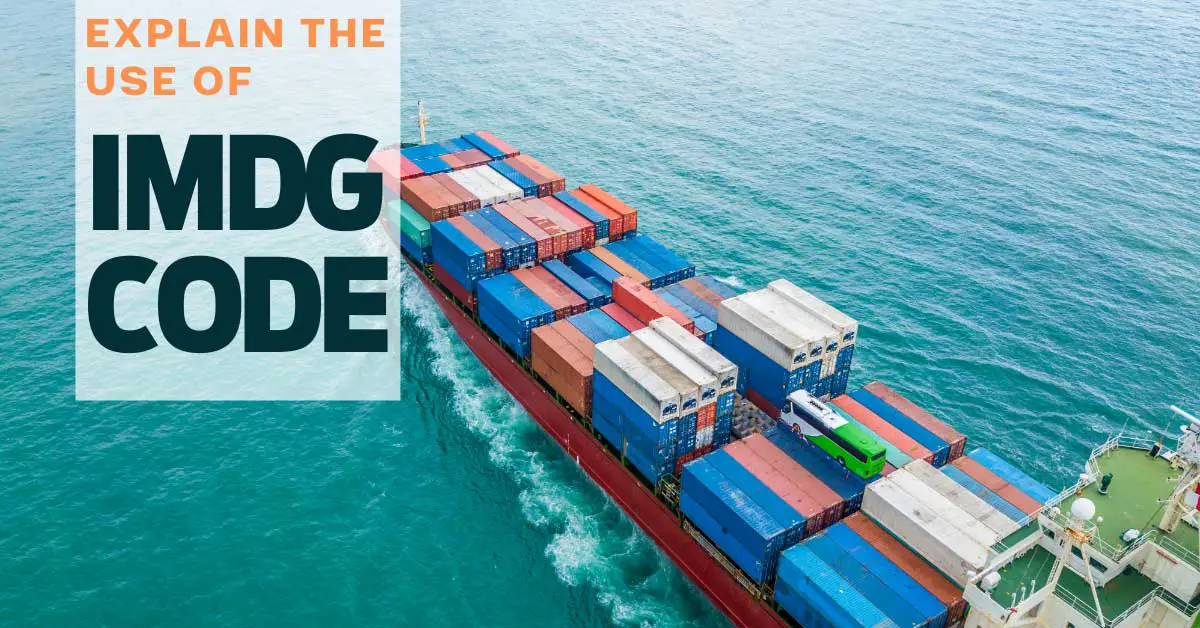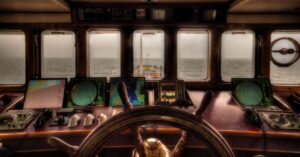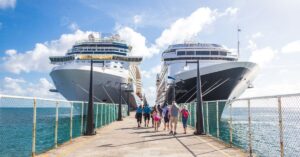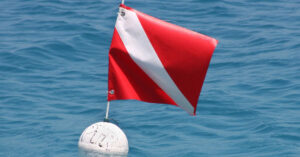IMDG stands for International Maritime Dangerous Goods; the code provides requirements and guidelines for safe transportation of hazardous goods by sea to protect the ship’s crew and prevent environmental pollution. Maintain and update of IMDG Code is the responsibility of the International Maritime Organization (IMO).
In addition to the requirements for the transport of hazardous materials by sea, IMDG code includes freight containers loading procedures, marine pollutants requirements, stowage and segregation, shipboard safety requirements and requirements to preserve the marine environment.
Based on the requirements of the International Convention for the Safety of Life at Sea (SOLAS) and the International Convention for the Prevention of Pollution from Ships (MARPOL), IMDG code implementation is mandatory without unnecessarily impeding the movement of dangerous goods.
What IMDG Code Regulates
IMDG Code regulates dangerous goods transportation by the sea intending to prevent injury to person or damage to the ship.
It regulates marine pollutants transportation by the sea to prevent any harm to the marine environment.
How IMDG Code Works
The IMDG Code provides guidelines and requirements for the transport of hazardous materials as follow:
- Categorize the dangerous goods into groups based on the hazardous level the present during transportation.
- Packing and storage requirements of dangerous goods during transportation.
- Provides identification marks and hazard warning signs of dangerous goods during transportation.
- Necessary documents and data sheets that need to be available during transportation.
- Ensuring proper separation of any dangerous goods that may dangerously react together during transportation.
- Guidelines of the storage location of dangerous goods on board the ship during transportation.
- Emergency response guidelines for fire or spillage involving dangerous goods on board the ship.
IMDG Code Structure
The IMDG code comes in 2 volumes and a Supplement, the two volumes are divided into seven sections as follow:
Volume 1
- Part 1 – General Provisions, Definition and Training.
- Part 2 – Classification
- Part 4 – Packing and Tank Provisions
- Part 5 – Consignment Procedures
- Part 6 – Construction and testing of packaging, intermediate bulk containers, large packaging, portable tanks and road talk vehicles.
- Part 7 – Provisions concerning transport operations.
Volume 2
- Part 3 – Dangerous Goods list and limited quantities exception.
- Appendix A – List of Generic and NOS proper shipping names
- Appendix B – Glossary of terms.
Supplement
- Emergency response procedures (EmS Guide)
- Medical first aid guide (MFAG)
- Reporting Procedures
- IMO/ILO/ECE guidelines for packing cargo transport units
- Irradiated Nuclear Fuel (INF) code
- Recommendations on the safe use of Pesticides on ships.
Dangerous Goods Classes
Dangerous Goods are divided into the following classes as per IMDG Code:
- Class 1 – Explosives.
- Class 2 – Gases: compressed, liquefied or dissolved under pressure.
- Class 3 – Flammable liquids.
- Class 4.1 – Flammable solids.
- Class 4.2 – Substances liable to spontaneous combustion.
- Class 4.3 – Substances which, in contact with water, emit flammable gases.
- Class 5.1 – Oxidizing substances.
- Class 5.2 – Organic peroxides.
- Class 6.1 – Poisonous (toxic) substances.
- Class 6.2 – Infectious substances.
- Class 7 – Radioactive materials.
- Class 8 – Corrosives.
- Class 9 – Miscellaneous dangerous substances.
IMDG Code Requirements
Marine Pollutants Packaging
All materials classified in IMDG classes 1 to 9 are considered marine pollutants and should carry (Marine Pollutant) mark on their packages.
The packages are categorized into three groups (except classes 1, 2, 4.1, 5.2, 6.2 and 7) based on the degree of danger they present
- Packing Group I: higher danger materials.
- Packing Group II: medium danger materials.
- Packing Group III: low danger materials.
Dangerous Goods Packages Labelling and Marking
The technical name of the dangerous goods shall be marked clearly on the packages, an indication of hazardous goods properties, also, the marking labels shall be able to remain intact at least three months if immersed in the sea.
Documents of Compliances
Documentation to contain the minimum following details:
- Technical name.
- Quantity and types of packages.
- Weight of the goods.
- UN number
- Good Class.
- Flash Point (whenever applicable).
- Authority approval certificate for proper packing.
Dangerous Goods Segregation
Code ensures proper separation of any dangerous goods that may dangerously react together during transportation or any incompatible cargoes (e.g., foodstuff should not be packed or stored with any dangerous goods).
Dangerous goods are segregated based on their chemical properties; similar chemical properties goods are grouped. Segregation groups are acids, ammonium compounds, bromates, chlorates, chlorites, cyanides, heavy metals and their salts, hypochlorite, lead and lead compounds, liquid halogenated hydrocarbon, mercury and mercury compounds, nitrites, perchlorates, permanganates, powdered metals, peroxides, and azides.
Dangerous Goods Loading/Discharging
Rule, guidelines and precautions are highlighted in the code that needs to follow during loading and discharging operations:
- Stow goods based on the nature of goods and to segregate incompatible goods.
- Adequate precautions to be taken against fire or explosion for inflammable liquids, gases, spontaneous combustion goods.
- Proper ventilation for spaces with goods emitting dangerous vapours.
- Proper securing against the movement of dangerous goods.
- Any packages that have been wetted by rain or any other source should be effectively dried before loading.
- Loading and discharging operation should be performed with adequate lighting or in daylight whenever possible.
- Dangerous goods flash point should be considered in relation to ambient temperature during Loading and discharging operation.
- Loading and discharging operation to be supervised by a competent officer.
- Spark arrestor to be fitted for all ventilators whenever explosive goods are loaded.
Additional Requirements for Loading Explosives:
- Explosives to be stowed in a magazine except for ammunition.
- Electrical equipment and cables to be explosion-proof.
- Stow explosive goods in a cool, dry, well-ventilated spaces with flame-proof ventilation fans.
- Stow explosive goods away from living quarters.
Dangerous Goods Transportation
The handling, carriage, packaging, storage and classification of dangerous goods must be in full compliance with the law and legislation of:
- The country of origin of the dangerous goods.
- The countries that dangerous goods will move through during transportation.
- The country of the final destination.
- The country of the flag of carrying ship.
Medical First Aid Guide Covered in IMDG Code
The code covers the medical first aid in the event of a dangerous goods accident. It provides the necessary advice for chemical poisoning management and diagnosis. As well, provides essential information about specific toxic effect, ways to deal with, and recommended treatment. List of select chemicals that require special treatment.
The code as well provides an emergency action plan to implement in case of exposure.
Material Safety Data Sheets (MSDS)
MSDS provides the required information for safe handling, storage and transportation of dangerous goods.
MSDS shall provide the necessary information as per the following sections:
- Chemical Product and Company Identification: Provides product name, chemical formula, manufacturer name details.
- Composition/Information on Ingredients: Provides composition and ingredient details of the goods.
- Hazards Identification: Provides necessary information on associated hazards such as corrosive, oxidizing, toxic, and flammable, etc.
- First-Aid Measures: Provides necessary information on first-aid regarding inhalation, skin/eye contact, etc.
- Firefighting measures: Provides necessary information on firefighting agents and necessary precautions.
- Accidental Release Measures: Provides necessary action in case of spills or leaks.
- Handling and Storage: Provides necessary information related to storage ventilation, temperature and place of storage, and essential information for proper handling of the product.
- Exposure Controls/Personal Protection: Provides necessary information required during the exposure to the goods and the required PPE’s.
- Physical and Chemical Properties: Provides necessary information on the properties of the goods such as appearance, boiling/melting points, solubility in water, etc.
- Stability and reactivity: Provides necessary information on the reactivity of the goods.
- Toxicological information: Provides necessary toxicological information.
- Ecological information: Provides the necessary ecological details.
- Disposal Considerations: Provides necessary information on goods disposal.
- Transport Information: Provides necessary information on goods transportation.
- Regulatory Information: Provides necessary regulatory information.
- Other Information.
SOLAS Chapter II-2, Regulation 19 – Carriage of Dangerous Goods
SOLAS regulation 19 provides additional requirements and measures addressing fire safety objectives for ships carrying dangerous goods. Including fire protection systems and its sufficient capability to provide the necessary protection to the vessel from the added fire hazards associated with the carriage of dangerous goods.
Besides, the regulation provides the guidelines for the necessary separation of the dangerous goods from ignition sources and the availability of appropriate personnel equipment for the added hazards.
SOLAS Regulation Applicability
- The requirements are applicable for the Cargo ships > 500 GT
The requirements are also applicable for the Cargo ships < 500 GT. Administration may reduce the requirements. Reduced requirements shall be recorded in the DOC for Dangerous Goods.
Interesting Article:
References:
- IMO – The International Maritime Dangerous Goods (IMDG) Code.





